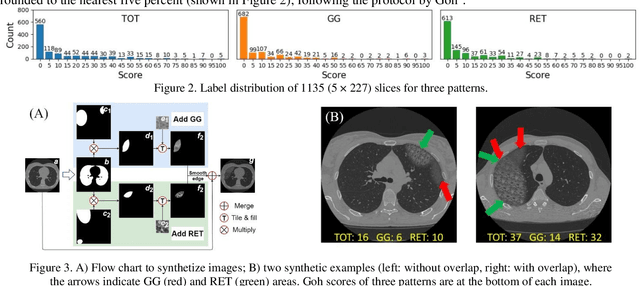Irene Hernández-Girón
Prediction of Lung CT Scores of Systemic Sclerosis by Cascaded Regression Neural Networks
Oct 15, 2021



Abstract:Visually scoring lung involvement in systemic sclerosis from CT scans plays an important role in monitoring progression, but its labor intensiveness hinders practical application. We proposed, therefore, an automatic scoring framework that consists of two cascaded deep regression neural networks. The first (3D) network aims to predict the craniocaudal position of five anatomically defined scoring levels on the 3D CT scans. The second (2D) network receives the resulting 2D axial slices and predicts the scores. We used 227 3D CT scans to train and validate the first network, and the resulting 1135 axial slices were used in the second network. Two experts scored independently a subset of data to obtain intra- and interobserver variabilities and the ground truth for all data was obtained in consensus. To alleviate the unbalance in training labels in the second network, we introduced a sampling technique and to increase the diversity of the training samples synthetic data was generated, mimicking ground glass and reticulation patterns. The 4-fold cross validation showed that our proposed network achieved an average MAE of 5.90, 4.66 and 4.49, weighted kappa of 0.66, 0.58 and 0.65 for total score (TOT), ground glass (GG) and reticular pattern (RET), respectively. Our network performed slightly worse than the best experts on TOT and GG prediction but it has competitive performance on RET prediction and has the potential to be an objective alternative for the visual scoring of SSc in CT thorax studies.
 Add to Chrome
Add to Chrome Add to Firefox
Add to Firefox Add to Edge
Add to Edge